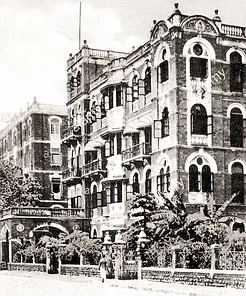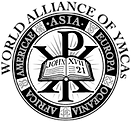HISTORY
The Young Men’s Christian Association was founded in London, England, on June 6, 1844, in response to unhealthy social conditions arising in the big cities at the end of the Industrial Revolution (roughly 1750 to 1850). The growth of the railroads and the centralization of commerce and industry brought many rural young men who needed jobs into cities like London. They worked 10 to 12 hours a day, six days a week. Far from home and family, these young men often lived in the workplace. They slept in crowded rooms over the company’s shop, a location thought to be safer than London’s tenements and streets. Outside the shop, things were bad—open sewers, pickpockets, thugs, beggars, drunks, lovers for hire, and abandoned children running wild by the thousands.

- The living conditions in Bombay in 1875 were similar to those in London in 1844. With the first textile mill coming up in 1854, Bombay had become the leading industrial city of India and employment opportunities, attracted British and Anglo-Indian youth as also rural youth from many parts of India to Bombay in search of a fortune.
- The Bombay YMCA was established on April 25, 1875. At the close of a public meeting, held at the Cowasjee Hall, Dhobi Talao, on April 25, 1875, and addressed by Rev. A. N. Somerville of Glasgow, the speaker said that he would like to see a YMCA established before he left India the next day. Those interested were asked to stay on after the meeting. After some discussion, a resolution was passed unanimously and the Bombay YMCA was formally established.


Former Head Office of the Bombay YMCA
Currently, Central Branch (Colaba)


Mr. YMCA Best Physique Contest held in the year 1979
LOGO
In 1878, the Eighth Conference of the World Alliance of YMCAs met in Geneva, Switzerland, and had on its agenda the creation of a “distinctive international badge of the Associations.” The matter was turned over to a committee, and three years later at the Ninth Conference in London, the alliance approved the following: A circle, depicting the oneness of mankind, divided at its outside edge into five segments bearing the names of five parts of the world as they were described at the time – Europe, Asia, Oceania, Africa and America – separated by small decorative scrolls called cartouches “upon which can be read in many languages the initials of our title, YMCA.” Inside the circle are the first two letters of the word Christ. The Greek letters Chi and Rho (XP) form the ancient symbol that early Christians painted on the walls of the catacombs. It was used by the YMCA to remind all that Christ was at the centre of the movement. Finally, an open Bible has added “both because this divine book is the weapon of warfare which St. John gives to young men, and because it’s the distinguishing mark of the great Reformation. The Bible opens on the Savior’s High Priestly prayer, from which we have specially chosen the 21st verse: ‘That they all may be one…We are one’ – John 17:21.” Behind the book and symbols was an aura of golden rays. The action on the badge was noteworthy, wrote one YMCA historian, because the phrase “that they all may be one” became the supreme expression of the ecumenical purposes of the World Alliance, pulling together those many sects. Luther H. Gulick, who revolutionized sports and physical fitness at the YMCA, purposed a red equilateral triangle as a symbol in 1891. It was adopted immediately by Springfield College. The sides of the triangle, Gulick said, stood for “an essential unity – spirit, mind and body – each being a necessary and eternal part of man, being neither one alone but all three,” a “wonderful combination of the dust of the earth and the breath of God.”


The first official logo


Current World YMCA logo


The official logo of the Bombay YMCA

